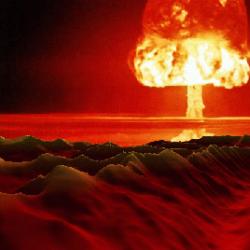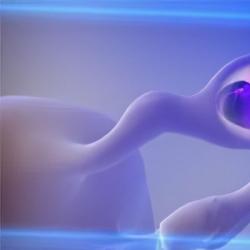The correct definition of intensification. Indicators and methods for determining the intensification of agricultural production. See what "intensification" is in other dictionaries
The economy of any single country is based on the introduction of an extensive or intensive method of expanding production. The first one has proven itself to be inefficient, reducing the key indicators of any branch of human economic activity. The conclusion suggests itself that the second method is more effective and that it should be considered more closely. Intensification is a process in the development of any economic sector (including production), in which its capacity is increased through the use of progressive methods that are constantly growing and modernizing.
Intensive type of economic development provides for the improvement of individual factors of production. The ideal result should be an increase in the scale of production. The realities of modern life are not always favorable to any kind of human activity. Only timely monitoring of economic indicators will make it possible to understand how and when to change the already established order in their activities.
Modern tendencies of intensification

If it is necessary to radically change the form of existence of an enterprise, only intensification will help - this is the possibility of using innovative means of human labor, improving the skills of each employee. Particular attention is paid to personnel policy. Careful selection of employees allows you to increase income from production at times.
One of the ways to intensify is to improve the methods of using the production potential already available. With untimely intervention in the work process or an incorrect, unprofessional approach, a decrease in production turnover may be observed.
The basis of production efficiency
The intensification of production often finds expression in an increase in returns, an increase in the volume of production from each raw unit, and an increase in the quality of goods. Analysis of key indicators allows you to understand where there are gaps that need to be filled.
It suffices to give a simple example: having set the goal of doubling output, in the conditions of the process of intensification, they do not build a new enterprise with similar indicators. It is enough to reconstruct the old one, replace the equipment with a newer and more functional one, review the personnel reserve. All this together will give the desired result.
Material base of the process
Global intensification is an opportunity not only to find new ways to increase productivity, but also to reconsider other resources used. Changing the ways of improving the technology of manufacturing goods, the introduction of innovative systems in various industries - this is nothing but the material basis of intensification. To understand whether the right path has been chosen, they consider the end result in unity with the resources used. This will help to detect errors and correct them promptly.
Production intensification: varieties

The right approach - excellent results

- (lat.). An increase in productive power in any activity or enterprise, for example, agriculture on a given estate, etc. Dictionary of foreign words included in the Russian language. Chudinov A.N., 1910. INTENSIFICATION [fr. ... ... Dictionary of foreign words of the Russian language
Strengthening, addition, addition, increase, increase, rise, growth, growth; deepening Dictionary of Russian synonyms. intensification see intensification Dictionary of synonyms of the Russian language. Practical guide. M.: Russian language ... Synonym dictionary
intensification- and, well. intensification f. Increased tension, productivity; And. agriculture, a consistent increasing investment of means of production and labor per unit area, and in animal husbandry per head of livestock, the application of the achievements of science ... ... Historical Dictionary of Gallicisms of the Russian Language
- (from the Latin intensio tension, amplification and ... fication), strengthening, increase in tension, productivity, efficiency (for example, intensification of production) ... Modern Encyclopedia
Intensification- (from the Latin intensio tension, amplification and ... fication), strengthening, an increase in tension, productivity, efficiency (for example, intensification of production). … Illustrated Encyclopedic Dictionary
Increasing the intensity and productivity of labor. Dictionary of business terms. Akademik.ru. 2001 ... Glossary of business terms
- (from lat. intensio tension, amplification and ... fication), strengthening, increase in tension, productivity, efficiency ... Big Encyclopedic Dictionary
INTENSIFY [te], roar, roar; this; owls. and nonsov., that (book). Make (make) intense (in 2 values), more intense. I. labor. Explanatory dictionary of Ozhegov. S.I. Ozhegov, N.Yu. Shvedova. 1949 1992 ... Explanatory dictionary of Ozhegov
- (French intensification, lat. intensio tension, strengthening) the process and organization of the development of production, in which the most efficient means of production are used, as well as the expansion of production. Expense Conversion Process ... ... Wikipedia
- (from lat. inten sus tense and facio do) eng. intensification; German Intensivierung. Gain, increase in tension, productivity, reality. Antinazi. Encyclopedia of Sociology, 2009 ... Encyclopedia of Sociology
Books
- Intensification of oil production
- Intensification of oil production, Makhmudbekov E.A. Intensification of oil production is an important area in the oil and gas industry, which can significantly increase the efficiency of operation and development of oil fields. Today…
Production intensification the process of development of social production based on the ever more complete and rational use of technical, material and labor resources on the basis of scientific and technological progress. Intensive development differs from extensive development, which boils down to increasing production capacity on the same technical base, increasing the material resources used and the number of workers. Describing the development of production, K. Marx wrote in Capital that “... at certain intervals reproduction takes place, and, moreover, if we consider it from a social point of view, reproduction on an expanded scale: expanded extensively, if only the field of production expands ; expanded intensively if more efficient means of production are used” (K. Marx and F. Engels, Soch., 2nd ed., vol. 24, p. 193). The intensive development of production under capitalism is aimed at increasing the profits of the capitalists while increasing the intensity of labor. I. p. is an important factor in the competitive struggle of capitalist entrepreneurs. The social consequences of capitalist industrialization are increased exploitation of the working people, an increase in occupational diseases and industrial injuries, and an increase in unemployment. Socialist industrial production is aimed at increasing the efficiency of social production in every possible way, while at the same time raising the well-being and cultural level of the working people, eliminating heavy manual labor, and gradually erasing the distinctions between mental and physical labor. The main sources of socialist industrial production are scientific and technological progress, the improvement of the organization of production and labor, and the improvement of the system and methods of management and planning. Socialist industrial production provides for a normal intensity of labor based on the scientific organization of labor and a creative attitude towards it, on a high conscious discipline of all workers. The specific forms of industrial production under socialism depend on the characteristics of each branch of the national economy. I. p. in industry - the widespread economically justified introduction of advanced equipment, new types of materials, raw materials and fuels, highly efficient complex-mechanized and automated technological processes, improving the quality of products, improving the organization of production on the basis of its further specialization and cooperation, improving the use of equipment, areas, raw materials, materials, fuel and energy, acceleration of production processes. I. p. in construction - an increase in the level of industrialization, the transformation of construction into a complex-mechanized process of erecting buildings and structures from standardized elements manufactured by industry; equipping construction with high-performance equipment, reducing construction time, improving its quality. In agriculture, industrial production means raising the culture of farming on the basis of further electrification, chemicalization, comprehensive mechanization, land reclamation, and the introduction into production of the latest achievements in the agronomic and biological sciences, advanced technology, and the organization of production. The effectiveness of industrial production consists in increasing output and national income while simultaneously increasing labor productivity and capital productivity and reducing the material intensity of output. The degree of I. production in the industry of the USSR is characterized, for example, by the following data: labor productivity increased in 1971 in comparison with 1940 by 5.2 times; the value of the industrial-production fixed assets of machine building and metalworking increased by 178% in 1970 compared with 1960, and the total output of this industry by 213%; at power plants for general use, the specific consumption of reference fuel per 1 supplied kW․h electricity decreased from 645 G in 1940 to 360 G in 1971; utilization ratio of useful volume of blast furnaces improved from 1.19 m 3 on 1 T in 1940 to 0.592 in 1971, and the average daily steel removal from 1 m 2 hearth area of open-hearth furnaces increased during this time from 4.24 T up to 9.16 T.
The development of the socialist economy proceeds by using the action of both intensive and extensive factors. As socialist production improves, the ratio between extensive and intensive factors changes in favor of the latter. At the present stage of communist construction, industrial production has become the main source of development and raising the efficiency of production. It takes place in the conditions of the scientific and technological revolution and covers all branches of the national economy. Lit.: Materials of the XXIV Congress of the CPSU, M., 1971; Heinman S. A., Problems of intensification of industrial production, M., 1968; Afanasiev V. G., On the intensification of the development of a socialist society, M., 1969; Factors of economic development of the USSR, ed. A. I. Notkina. Moscow, 1970. Intensification and reserves of the economy, M.; 1970. B. I. Maidanchik.
Great Soviet Encyclopedia. - M.: Soviet Encyclopedia. 1969-1978 .
See what "intensification of production" is in other dictionaries:
Increasing the efficiency of production, based on: the use of the latest equipment and technology, as well as advanced methods of labor organization; on the rational use of labor, material and financial resources. See also: Production ... ... Financial vocabulary
Encyclopedia of Sociology
production intensification- Growth of production based on a more complete, efficient and rational use of technical, material and labor resources on the basis of scientific and technological progress ... Geography Dictionary
production intensification- the process of development of production, based on the ever more complete and rational use of technical, material and labor resources on the basis of scientific and technological progress. Intensive development is different from ... ...
PRODUCTION INTENSIFICATION- - one of the ways to increase production efficiency, associated with an increase in production volume, more efficient use of material, labor and financial resources as a result of the introduction of scientific and technological progress ... Economist's Concise Dictionary
PRODUCTION INTENSIFICATION- English. intensification of production; German Intensivierung der Produktion. Increasing production efficiency based on the use of the latest equipment and technology, advanced methods of labor organization, rational use of labor, ... ... Explanatory Dictionary of Sociology
- (from the Latin intensio tension, amplification and ... fication), strengthening, increase in tension, productivity, efficiency (for example, intensification of production) ... Modern Encyclopedia
Intensification- (from the Latin intensio tension, amplification and ... fication), strengthening, an increase in tension, productivity, efficiency (for example, intensification of production). … Illustrated Encyclopedic Dictionary
Consistently increasing investment of means of production and labor per unit of land area, and in animal husbandry per head of livestock, application of the achievements of science and best practices, improvement of farming methods and technology ... ... Great Soviet Encyclopedia
Intensification- (from Latin intensio tension, amplification and facio I do) amplification, increase in tension, productivity, efficiency: See also: intensification of production ... Encyclopedic Dictionary of Metallurgy
Books
- Intensification of the production of high-quality livestock products, Dolzhenkova Galina Mikhailovna, Mironova Irina Valerievna, Tagirov Khamit Kharisovich. The monograph presents the results of scientific research related to the selection of optimal doses of feed additives and combinations of genotypes. Conducted comprehensive growth studies,…
Production intensification
Production intensification - it is a process of development of social production based on the ever more complete and rational use of technical, material and labor resources on the basis of scientific and technological progress. The intensive development of production, in contrast to the extensive development of production, is constantly updated and improved. If in extensive production the entire increase in volumes, as a rule, occurs simply due to an increase in the number of tools and labor force, while remaining at the same level of labor productivity and using the same technical base, then the intensification of production leads to a significant increase in labor productivity due to the introduction of new technologies, machines, equipment, labor organization and so on.
To intensify the production of producers pushes competition, which forces producers to get more, and normal profits to reduce costs, increasing labor productivity. And it is impossible to significantly increase labor productivity without replacing obsolete equipment, changing technologies, using a more perfect organization of labor, more advanced and new materials. It is impossible to significantly increase labor productivity only by increasing the intensity of labor, since physical human capabilities are limited. In addition, with excessive labor intensity, many human functional capabilities fall, which leads to a drop in the quality of the work performed, manufacturing defects and other negative consequences. Therefore, the correct intensification of production always begins with a change in the technological process, either in technology as a whole or in its individual parts, or with the replacement of an obsolete fleet of machines, machine tools, apparatuses with more advanced and productive ones. The introduction of new technology or equipment, as a rule, entails a change in the organization of labor.
But the change of technology or equipment in itself will not give any positive changes if all the same workers with the same skill level participate in this production cycle. Any innovations introduced in production always entail the need to change the qualifications of workers in this production. Therefore, in order to maintain a constant social intensification of production, it is necessary to constantly train workers, cadres for more perfect, newer production. Social intensification is impossible without constant and ever more perfect training of skilled workers, engineers, office workers and workers in various auxiliary spheres. With the constant development of science and technology, the introduction into production of more and more advanced technologies, more complex equipment, machines, machine tools, automatic machines and automatic lines, and the like, a constant increase in the qualifications of those workers who will introduce all this, who will manage it all and work on it.
The intensification of production today is the main direction in the matter of increasing social labor productivity, reducing social costs, increasing the total social product and improving the welfare of the population. Thanks to the increase in the intensification of production, the role of the division of labor and exchange is increasingly increasing, which still more pushes all producers to introduce everything advanced and new into their production, to look for reserves, and so on. It goes without saying that the intensification of production in different sectors of the national economy has its own characteristics and rates of development. So, if the industry in this matter is making leaps and bounds, then agriculture, due to its seasonality and rigid annual cycles, does not have such an opportunity. Even if planting and harvesting can be learned in 2-3 days, the growing process itself will still remain 1 or 2 (where it is warm) times a year. Alas, agricultural production, in terms of cultivation, is still impossible to put on a continuous flow, like industrial production, and therefore, its intensification is limited.
In addition to saving labor (growth in productivity), the correct intensification of production, as a rule, also leads to the saving of all resources: labor, material, energy, natural, financial, and others. If on the early historical path of the development of the human economy, production volumes were increased primarily through extensive methods, now only backward manufacturers are trying to develop something by increasing the intensity of labor or simply increasing the amount of old equipment, the number of new workers, and the like. Today, the whole prospect of any production for any entrepreneur lies in the plane of introducing something new, a new product, new technology, new equipment, a new organization of labor, and so on. Otherwise, in conditions of competition and a sufficiently high level of development of the productive forces, it is practically impossible to achieve good success in any commercial business. And extensive methods today serve only as a supplement, as temporary and urgent ways of developing production.
Intensification is a process in the development of production through the use of more efficient means of production and its organization, in contrast to extensive economic growth due to the expansion of production while maintaining the level of technology and quality of resources. Intensification involves an increase in production costs, but these costs are paid off by a more efficient and economical use of all the resources used. Due to the intensification, there is a process of transformation of the structure of the resources used, its shift in favor of materialized labor (capital-labor ratio), because the use of new machines and equipment leads to savings in living labor and an increase in its productivity. There is also a saving of objects of labor and natural resources due to the replacement of natural materials with synthetic ones, the introduction of the latest technologies, including technologies that lead to waste-free production. As a result of intensification, there are changes in the use of all factors of production. The intensity of labor is growing, which is manifested in an increase in the density of the use of working time, an increase in physical, nervous and intellectual stress on the workforce; the organization of production improves; all means of production and raw materials are saved.
The intensification of agriculture is the main form of expanded reproduction, carried out by improving the system of conducting the industry on the basis of scientific and technological progress in order to increase the yield of products per unit area, increase labor productivity and reduce costs per unit of production.
When determining intensification, it is necessary to proceed from its characteristic triple relationship: costs - land - products. However, products can also be obtained with a negative impact of intensification on the environment, so one of the necessary conditions for this process is environmental well-being.
Consequently, the intensification of agriculture should be understood as additional investments of material resources, and sometimes of human labor on the same area, carried out on the basis of improving equipment and production technology in order to increase the volume of production while simultaneously increasing the economic fertility of the land.
This definition reveals the material basis of intensification, which is the additional investment of quality funds and skilled labor. In the course of intensification, the costs of material resources (materialized labor) increase, and living labor is reduced, so that the total labor costs per unit of output as a whole decrease.
Additional investments should be understood as the costs of material resources and labor per unit area, which exceed the level of costs in the base period or in the base economy, are carried out in order to increase soil fertility, increase output per unit area. In essence, the concept of "additional investment of material resources and labor" implies a change in the forms of organization of production, the transformation of equipment and technology.
The decisive factor in the intensification of production and economic growth is scientific and technological progress, which involves the development of fundamental research, applied research and the development and implementation of new technologies, the creation of fundamentally new machinery and equipment. This process as a whole is called innovative. The indicators of the innovation process are the share of products of science-intensive industries in the total volume of production, the equipment disposal rate, the rate of introduction of new technology, etc. These same indicators are the main indicators of production intensification.
Intensive development path - change due to quantity. Contributes to the continuous growth of productivity and livestock production.
An extensive development path does not have broad prospects, because the increase in production in this way of development is achieved due to the quantity. An increase in the means of labor involved in the process.






